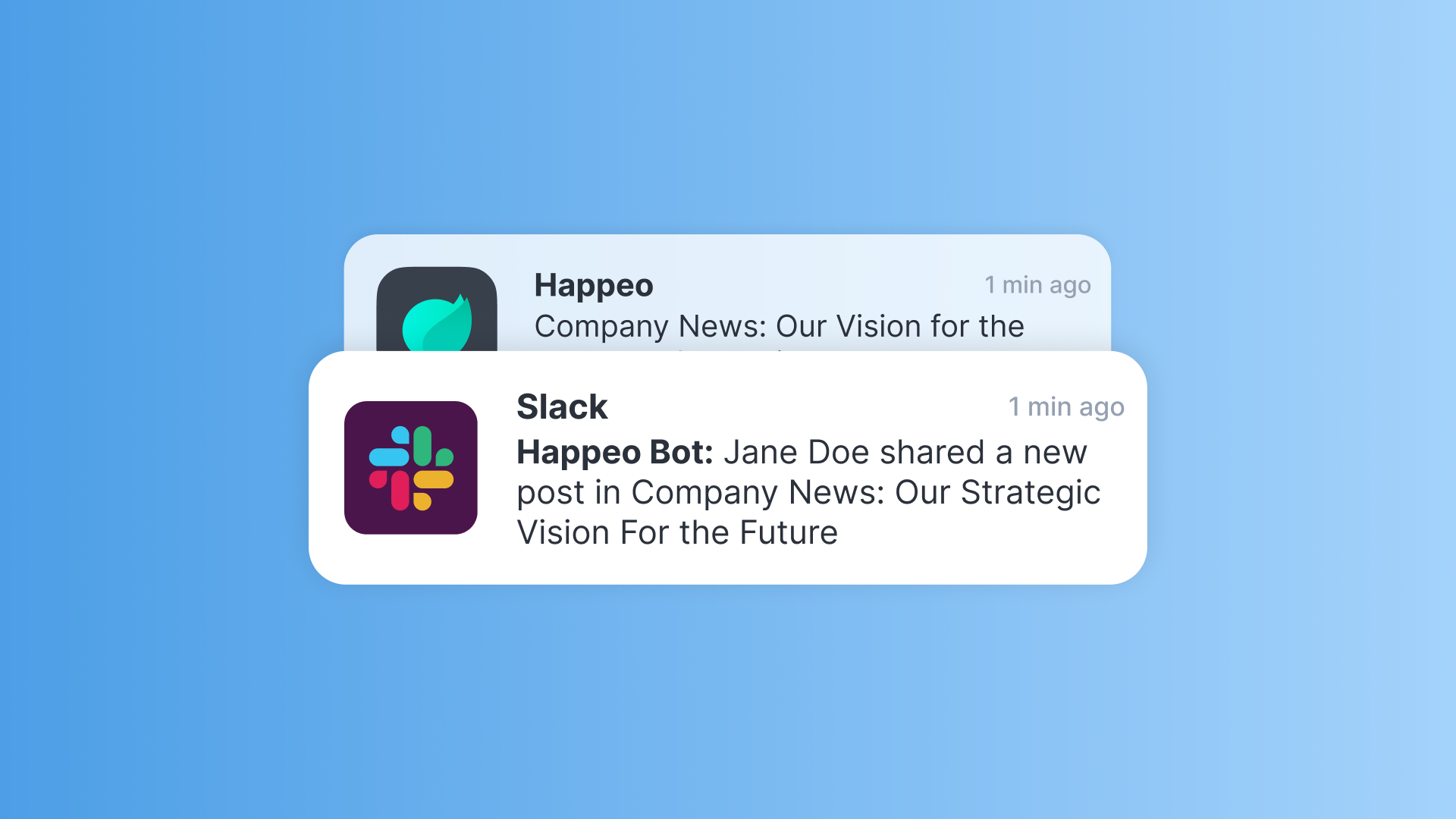
Internal Communications Quick guides
11 intranet best practices for greater adoption and engagement

11 mins read
Start building your digital home with Happeo
Request a demoInternal Communications Quick guides
Product
Features
Solutions
Happeo for
Use cases
Resources
Explore
Support
Happeo For
Use cases
Comparisons
Explore
Support
Recent

Jonathan Davies
11 mins read
In today’s world of remote and hybrid work, it’s more important than ever to have the right tools for effective communication with your workforce.
And traditional communication tools like email and legacy intranets don’t cut it: one study suggests that as many as 35% of emails go unread.
So what’s the solution that can help you to boost employee engagement, increase productivity and create a healthy environment for effective, purposeful collaboration? An employee intranet.
But wait: didn’t we just say that legacy intranets aren’t up to the job of managing communications in today’s workplace?
Well, yes. The fact is, not all intranets are created equal. According to some research, as many as 90% of employee intranets fail to meet their initial objectives.
Your intranet should be the glue that holds together the different moving parts of your organization. It should be the hub that employees go to to find information, collaborate with colleagues, and even connect socially.
In 2022, it’s way past time to move on from the cumbersome, outdated, and poorly-used intranets of old, and make sure your organization’s intranet actually brings people together.
In this article, we’ll share 12 intranet best practices that will help you to choose the right intranet platform, and implement it in the way that best benefits your organization.
Watch video
Choosing and implementing an intranet is only one part of a much bigger picture. You’ll only see success from your intranet when your employees are using it in a structured and effective way.
Thinking about setting up a company intranet for the first time (or finally replacing that clunky legacy software)? Here are 11 intranet best practices to help you find and implement the right software solution for your organization:
Before you can even begin to choose an intranet solution, you have to figure out what it needs to achieve for your organization. Your employees will be the people who use your intranet and will ultimately determine its success or failure — so it makes sense to include them in the process of finding and implementing the right solution.
That means conducting an intranet needs analysis to figure out what your intranet actually needs to do. This is a long and extensive process, but the first step is to document everything you can about the tools your employees already use for communication, collaboration, and connection. If you already have an intranet in place, dive into its analytics to find out how your employees are using it and which features could be improved.
Then, you can develop a set of questions to send out to your employees about their needs when it comes to workplace tools. To do this, it’s a good idea to gather a team of experts such as internal comms professionals, managers, and other stakeholders.
For a deeper analysis, you can also carry out more extensive, qualitative research in the form of individual interviews or group sessions where you really get into the specifics of what your employees want from an intranet solution.
Once you’ve completed your intranet needs analysis, you’ll have a much better idea of the features you need to look for in an intranet solution. The exact features you need will depend on your organization and its employees. That said, here are a few important intranet features that you should keep in mind when looking for a solution:
A well-implemented intranet should be the first place employees go to look for files and information. But if it’s not easy for them to find what they need once they get there, they’ll quickly disengage and go back to using the tools and platforms they used before.
When you’re setting up your intranet, it’s important to develop a strict taxonomy for things like file names and folder structure so that it’s always easy to find information. You should also look for solutions with a robust and powerful search function that allows users to search using keywords and quickly bring up the files they need.
The best solutions even allow users to search across multiple locations at the same time, so whether the file is located within the intranet, attached to an email, or stored in a shared Google Drive, they’ll be able to get hold of it in just a few seconds.
A big part of your intranet news feed is the content that your intranet champions choose to share. It’s important to create and share content that your audience will actually connect with.
So, no more dry, corporate newsletters. Instead, think about using content like blog posts, podcasts, employee shout-outs, interesting thought-leadership pieces, and questionnaires and surveys that get employees engaged with your company culture.
After all, internal communications isn’t just about top-down messaging from management — or it shouldn’t be. Instead, it should facilitate bi-directional communication that allow employees on all levels to connect with each other and shout about the great stuff that’s happening within your organization.
And, since today’s workforce is increasingly made up of Millennials and Gen Z-ers, the most successful platforms are social intranets, modeled after the online spaces where those younger employers are already spending their time. That means that solutions with social-media-like communication features like comments, gifs, and emoji-based reactions will always be winners.
An intranet isn’t just a nice-to-have tool to implement and then forget about. When it’s done right, it should go to the very heart of your organization. It should be the first thing your employees open when they get to work in the morning, and the last thing they shut down at night.
But the thing is, nobody is going to use an intranet platform that’s clunky, complicated to navigate, or just plain awful to look at. The whole point of an intranet is to make things easier for your employees — which means it needs to be set up with ease of use in mind.
So what does that mean? A well-developed interface, for one thing. And a great design doesn’t hurt. But more importantly, your intranet should be designed around the ways that your employees will actually use it — that means putting the most important tools upfront so they’re easy to find.
When it’s set up in this way, an intranet can do more than just help your employees to send messages to each other and find information. It can significantly improve employee experience by providing recognition to high performers, acting as a training hub, boosting collaboration, and connecting everyone together.
Find out more about how to get employees on board with a new intranet.
So, let’s say you’ve found and set up the best possible intranet solution. And your employees are loving it — they’re using it every day to increase their productivity, collaborate with their co-workers, and even share stories and ideas with their colleagues in other departments.
Or at least… you think they are. But if you’re not actually measuring your intranet usage, how do you know? The truth is, you don’t — which is why the best intranet solutions come with advanced analytics that let you take a deep dive into the who, what, where, when, and why of how your employees are actually using your intranet.
So, what should you be measuring? Well, a number of things. You can check how many responses each post gets (in terms of likes, reactions, and comments) to give you a better idea of the types of content that resonate with your audience. You could check out which communication channels are most used — and what they’re being used for. You can even look at the most common searches that your employees are performing on the intranet, which allows you to make sure the information they’re looking for is actually there — and fill any gaps if it’s not.
Here’s the thing: everything is measurable. And you won’t see true intranet success until you’re using analytics and statistics effectively.
Your intranet will only work if it’s actually the place your employees go to communicate with each other. Otherwise, it’ll just be one more piece of forgotten software gathering cyber-dust and costing you money.
The problem is, your employees already have ways that they’re used to collaborating and finding information, and those habits can be difficult to break.
The simplest way to deal with this is to make sure you choose an intranet solution that encompasses all of the features and functions your employees need. This way, they won’t turn to other software to meet their needs, because it’s much easier to have everything in one place.
You could also consider setting rules or standards for communication in your workplace — for example, by saying that all team newsletters or announcements need to be delivered through the intranet rather than by email. Ensuring that your intranet works smoothly alongside all of the other tools your employees need to get their jobs done is also smart — we’ll talk more about this below.
When was the last time you needed to check a document, file, or piece of information — but couldn’t because you weren’t at your desk? In these days of hybrid and remote working, it’s more important than ever that your employees can access your intranet wherever they are, whenever they need to — and that means you need a mobile app.
Making your intranet accessible on mobile devices means that your employees (including remote workers) are never more than a few taps away from getting in touch with a colleague, accessing files, catching up with the company newsfeed, or even hopping on a quick call from the road. Plus, solutions with mobile apps often have the functionality for push notifications, which means you can get an urgent message out to everyone, whether or not they’re at their desks — and know they’ve received it.
Every company is different — and every employee is too. This means that your company intranet should be personalized both for your organization as a whole and for each individual employee.
To begin with, think about whether you can incorporate your logo, colors, branding, and company culture into the design of your intranet. This helps your employees to feel at home as soon as they log on to the platform since they’ll already be familiar with these elements.
You should also look for solutions that allow each employee to personalize the way the intranet looks to them. For example, some intranet solutions allow employees to customize their intranet homepage so that it shows the widgets, channels, and links that are most relevant to them .
Your employees probably already use a wide range of tools, apps, and software on a day-to-day basis. This might include programs that allow them to chat with their colleagues, video conferencing software, and apps for collaborating on documents and other files.
And just because you implement an employee intranet, this doesn’t mean they’ll stop needing all of those other tools. What it does mean is that you need to make sure your intranet of choice comes with integrations with all of the other tools that your teams use. After all, convincing your employees to use your intranet will be much easier if it works smoothly with the tools they need to get their jobs done, and makes their lives easier instead of harder.
Happeo, for example, includes integrations with Google Workspace, Microsoft 365, and a whole host of other popular workplace tools. That means that users can view and edit files, send instant messages, make calendar appointments, and more, all in one streamlined experience.
And there’s another added benefit too: we’ve found that workspace integrations can boost intranet adoption by as much as 43%.
When it’s properly implemented, an employee intranet can be one of the most powerful tools in your belt for collecting employee feedback. You can use it to gather your employees’ insights, ideas, and opinions about the intranet itself, and every other aspect of how your business is run.
The important thing is to actually implement the feedback and suggestions you get from your employees. You don’t have to act on everything, of course — but seeing a suggestion they made becoming a reality can provide a great sense of achievement for an employee, and even encourage others to share their honest opinions.
So what intranet features should you look for to facilitate this? Things like surveys, pulse polls, and even just post comments can be really useful here. Just remember to make sure it’s easy for employees to respond to your requests for feedback to make sure you get a high response rate.
That’s it: you now have a basic understanding of what an intranet should look like, and some of the specific features you should seek out when looking for a solution.
Now it’s up to you to take the intranet best practices we’ve shared and use them to find the right solution to help your organization to boost employee engagement, facilitate communication, and bring everyone together in a modern and powerful digital workplace.
Over to you!
